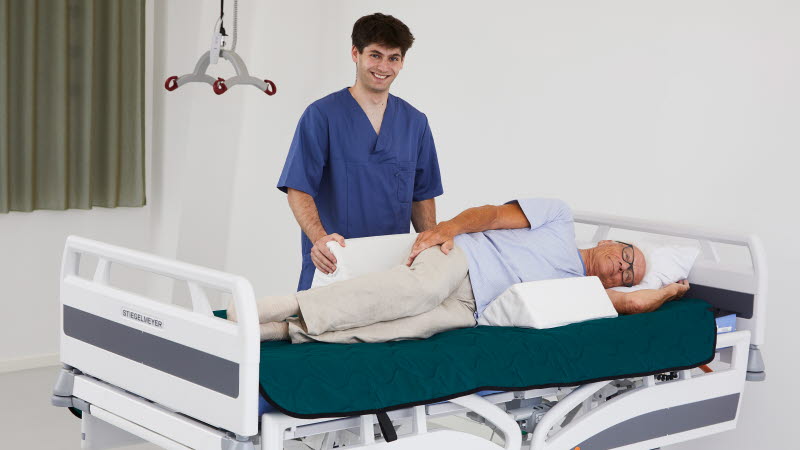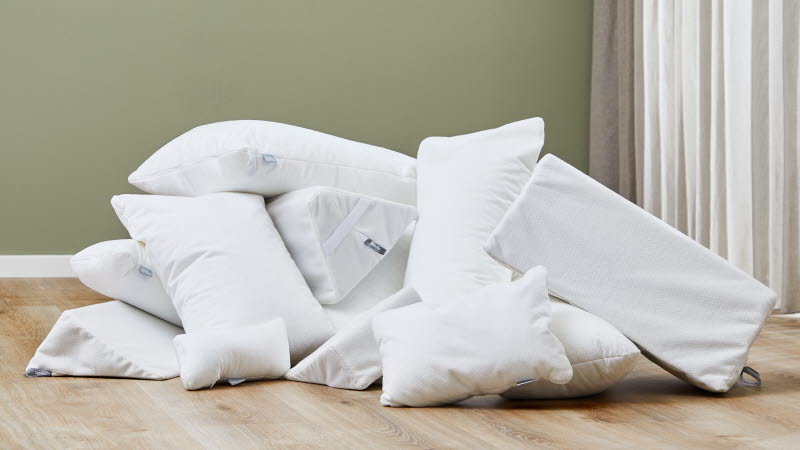Use the LeanOnMe positioning handbook for guidance on positioning cushions to enhance care.

A caregivers pivotal task
Thoughtful positioning is a fundamental aspect of care that promotes the well-being and dignity of bedridden individuals. With appropriate expertise and carefully chosen positioning aids, caregivers can create a safer, more comfortable environment that supports recovery and enhances quality of life. Regularly adjusting a person's position helps reduce the risk of complications like pressure ulcers, joint misalignment, and contractures, supporting their health and mobility.
The concept of 24-hour positioning offers a proactive and empowering approach. It highlights the potential to prevent physical issues and foster greater comfort and satisfaction for individuals and caregivers, enhancing the overall caregiving experience.

Understanding pressure ulcers
Pressure ulcers occur when sustained pressure on vulnerable areas reduces blood circulation, leading to insufficient blood and oxygen supply to the skin. If the pressure is not relieved, this can lead to tissue damage and cell death. Individuals who are unable to feel or respond to pain signals are at a higher risk, as the pressure remains unrelieved, causing more severe damage.
Pressure ulcers can develop anywhere on the body but are most common over bony prominences with less subcutaneous fat. When lying in a supine position, the sacral area and heels are particularly vulnerable. In a lateral position, areas such as the hips, ankles, and ears are at risk, and when seated, the ischial tuberosities are prone to pressure. Regular skin assessments of these areas are essential.
For more information on pressure ulcers, please visit the EPUAP website for comprehensive guidelines and resources.
Key features of positioning cushions
Effective positioning cushions can be essential for full-body support. The right cushions help maintain body awareness, which is crucial for movement and rehabilitation. By selecting appropriate cushions and regularly adjusting a person's position, caregivers can enhance comfort and reduce risks of potential complications.
These are some key features to consider when selecting positioning cushions:
Stretchiness: Cushions should withstand sustained pressure without the filling clumping together, which can create new pressure points.
Moulding ability: Cushions should mould well to effectively support limbs.
Pressure distribution: Cushions should ensure even distribution, preventing some body parts from bearing intense pressure.
Stability: The person should remain stable and well-supported to avoid sliding, which can cause shear and friction.
Air permeability and temperature regulation: Cushions should allow air circulation and regulate temperature to prevent moisture buildup on the skin.

For more insight into key considerations and suggestions for essential positioning, download the Immedia LeanOnMe positioning handbook.

Discover the complete product range of Immedia LeanOnme positioning cushions, wedges and triangles - for the best possible positioning.
Disclaimer: This handbook offers guidance and suggestions for using the LeanOnMe positioning cushions according to their intended use. These suggestions serve as general guidelines and do not replace the need for individual assessments performed by competent caregivers for each user/patient.
